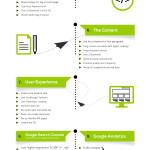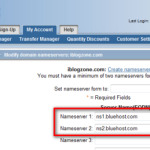Many bloggers see content curation as unimaginative and, at the very worst, lazy. But re-sharing, re-tweeting, and re-blogging engaging online content can actually be just as creative as writing fresh, original blog posts. Not only can it flesh out your blog or social media platform with thoughtful commentary from fellow creators, but it can also help create a unique composition that truly represents your personal image, brand, or message you’d like to convey to your audience. The success of platforms like Pinterest and Tumblr speaks to the power of content curation for all types of bloggers, but how can you harness this for yourself?
Content Curation: The Modern Mixtape
Think of it like a mixtape. (Who among us hasn’t put together a mixtape for someone to perfectly sum up our musical taste?) An intentionally arranged mix of music can convey a certain meaning, very much the same way collecting and sharing online media and content can create a cohesive, imaginative message. For individual bloggers, this may involve sharing anything that you find inspiring. If you refurbish vintage furniture, for example, share projects from other designers or simple tutorials that your readers can recreate.
Companies and organizations may have stricter policies to follow, but this shouldn’t take away from the creativity of sharing. Stick to your message. If your organization specializes in animal welfare, share success stories from rescues and shelters. Be sensitive to your audience (don’t, for instance, share graphic or upsetting stories about animal abuse, unless you’re already geared towards that sort of thing). Be equally sensitive to your branding. It’s very easy to mix your personal interests with your core message, so be sure to draw a hard line between them. What you personally find interesting or funny may not mesh well with the online presence you’ve already crafted.
The Tools of the Trade
 Fortunately, there are tools available to make this process a bit easier. These content curation tools can help you spread your net far and wide, catching hashtags, keywords, and other pre-determined elements. This will save you time, and it will retrieve highly specific content so you don’t have to wade through pages and pages of posts to find what you’re looking for. Feedly, TagBoard, and CurationSoft are examples of tools to investigate. Many of these tools also offer the option to auto-publish content, which can make your curation process that much easier.
Fortunately, there are tools available to make this process a bit easier. These content curation tools can help you spread your net far and wide, catching hashtags, keywords, and other pre-determined elements. This will save you time, and it will retrieve highly specific content so you don’t have to wade through pages and pages of posts to find what you’re looking for. Feedly, TagBoard, and CurationSoft are examples of tools to investigate. Many of these tools also offer the option to auto-publish content, which can make your curation process that much easier.
The Goldilocks Zone: Curated vs. Original
Now, we’re not saying you should choose one or the other. In fact, a healthy blog will have a mixture of both unique and shared content. Original blog posts create a necessary framework or context for anything you might share, while curated content creates a dialog with the other bloggers and artists around you. But the balance you strike between these two mediums will be unique to your blog or social media account. Personal bloggers may find that curated content creates a more complete sense of self, whereas organizations may feel that their audience gets more use from original content. As long as neither category is neglected, your blog will be a success.
Image credit: pixabay.com





![How To Create A High-Converting Landing Page – 11 Key Components [Infographic]](https://www.iblogzone.com/wp-content/uploads/2018/03/The-Anatomy-Of-A-Perfect-Landing-Page-Infographic-150x150.png)


